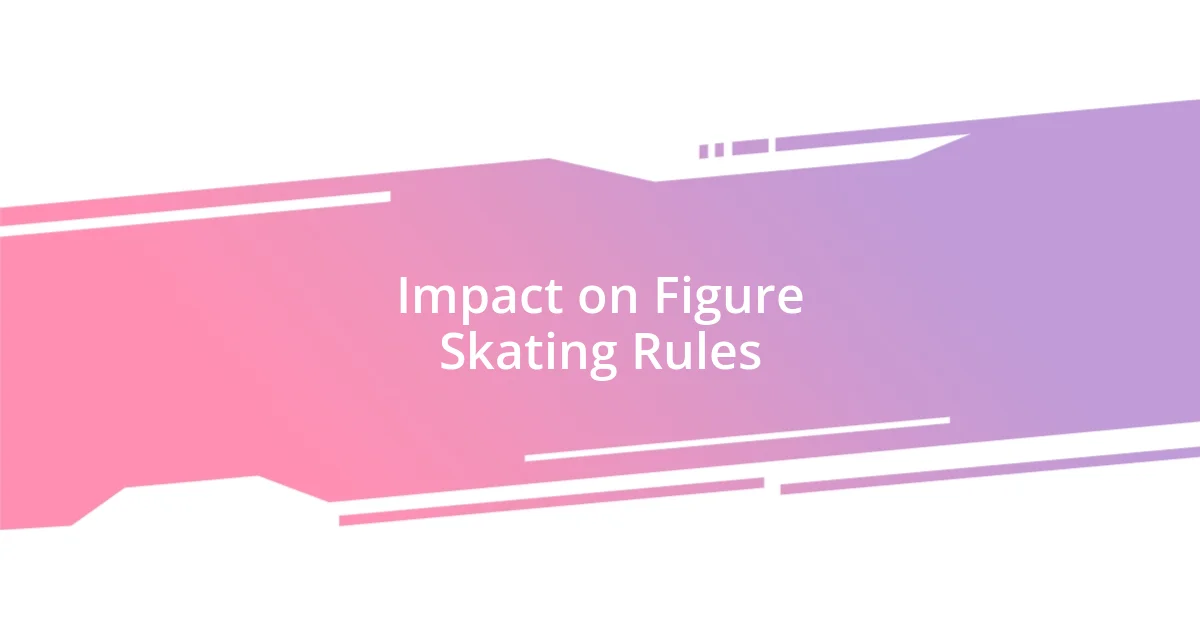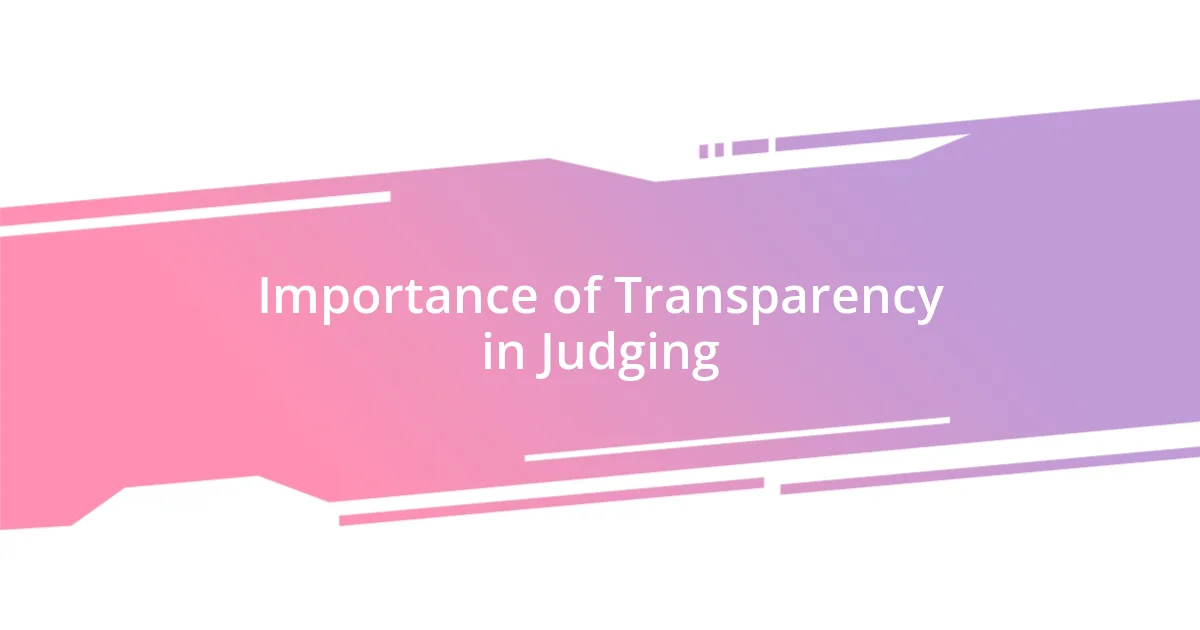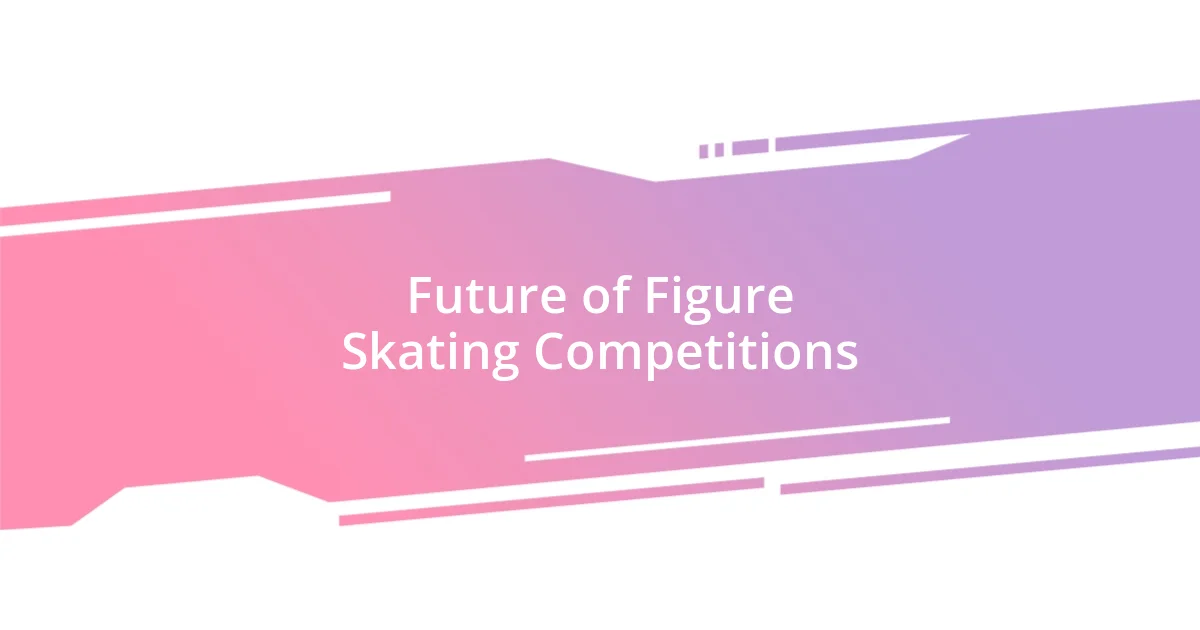Key takeaways:
- The 2002 Winter Olympics figure skating controversy led to reforms in the judging system, shifting from a traditional 6.0 scoring to a points-based system, enhancing fairness and transparency.
- Transparency in scoring has fostered greater trust among athletes, coaches, and fans, allowing better engagement and understanding of performances.
- The focus on skater safety and the integration of technology in training and judging are pivotal for the future of figure skating competitions, enhancing both performance and viewer experience.

Overview of the 2002 Controversy
The 2002 Winter Olympics in Salt Lake City became infamous primarily for the figure skating pairs competition, which was marred by a judging scandal. In a shocking turn of events, the Russian pair, Elena Berezhnaya and Anton Sikharulidze, secured the gold medal despite a clamor for the Canadian pair, Jamie Sale and David Pelletier, who had delivered a flawless performance. Did you feel the pang of disbelief that so many others experienced as the results were announced? I certainly did, as I watched the competition unfold, feeling a mix of excitement and dread.
As the judges’ marks came through, the revelation of a predetermined pact among judges from certain countries raised eyebrows and ignited fierce debate within the figure skating community. It was heartbreaking to see Sale and Pelletier, who had poured their hearts into their routines, overshadowed by what seemed like a political game rather than pure athletic merit. In moments like these, I can’t help but wonder: what does it say about the integrity of sports when such maneuvering overshadows the talent and effort of the athletes involved?
In response to the uproar, the ISU (International Skating Union) initiated reforms to their judging system to promote fairness and transparency. This controversy opened a floodgate of discussions surrounding transparency in judging and the need to protect athletes against subjective biases. It was a pivotal moment that highlighted not just the flaws in figure skating but also the broader implications of judging in sports. What could we learn from this event that echoes in today’s sporting arenas?

Impact on Figure Skating Rules
The fallout from the 2002 controversy fundamentally altered how figure skating was judged. After witnessing the public’s outrage, the ISU reformed the judging system, shifting from a traditional 6.0 scoring system to a more complex points-based system that rewarded technical elements and artistry separately. I remember feeling relief when these changes were announced, thinking about how a more systematic approach would help ensure fairness for all competitors.
Furthermore, one of the most significant impacts was the move towards greater transparency. Judges now had to provide detailed score breakdowns, and viewers could better understand how each performance was evaluated. This change made me feel like a part of the judging process, as I could finally engage with the scores rather than just accept them blindly. It sparked a shift in how audiences viewed the sport, enhancing our connection to the athletes.
While the reforms aimed to prevent biases, they also led to new pressures on skaters. The evolving rules forced athletes to master an even broader range of technical elements, which I found fascinating yet daunting. I often wonder, will these changes inspire the next generation of skaters, or will the burden of complexity take away from the artistry that makes figure skating so mesmerizing?
| Aspect | Before 2002 | After 2002 |
|---|---|---|
| Judging System | Traditional 6.0 | Points-based system |
| Transparency | Opaque judging | Detailed score breakdowns |
| Focus | Subjective evaluation | Technical and artistic evaluation |

Lessons on Fairness in Sports
The 2002 figure skating controversy taught me that fairness is paramount in sports. Seeing two pairs competing at such high levels, only for one to be overshadowed by hidden agendas, struck a nerve with me. It reminded me of how crucial it is for athletes to feel that they are being judged solely on their performance and not subject to external influences. The realization was profound: fairness not only impacts outcomes but also shapes the experiences and legacies of the athletes involved.
- Fair judgment fosters trust among athletes, coaches, and fans.
- Transparency in scoring builds credibility for sports organizations.
- Biases can destroy the spirit of friendly competition and diminish the value of hard work.
- Reformed systems can enhance the viewing experience by making evaluations clearer and more understandable.
I often reflect on how this situation underscored the importance of integrity. I remember watching the confused expressions on Sale and Pelletier’s faces as they stood on the podium. It was heartbreaking to see such raw emotion over what should have been the culmination of their hard work. That moment reinforced for me that sports should uplift, not tear down, the very athletes who dedicate their lives to excellence. Ultimately, the lessons on fairness in sports echo beyond figure skating; they apply to all arenas, giving us all something to strive for.

Importance of Transparency in Judging
Transparency in judging plays a crucial role in maintaining the integrity of any sport, and my experience with figure skating has really highlighted this. I still remember how the confusion and frustration from the 2002 Olympics made me question whether the scores I was seeing were fair representations of the athletes’ performances. If viewers can’t trust the judging process, how can we genuinely celebrate the achievements of the skaters? This change brought clarity, allowing fans to connect more deeply with the performances because we could finally see the reasoning behind the scores.
The introduction of detailed score breakdowns has made a significant difference in the way we perceive judging. I recall feeling a sense of empowerment when I could see the elements that contributed to each score, turning me into an informed spectator rather than a passive observer. It’s fascinating how knowing the specific criteria for scores enhances my appreciation for the artistry and technical skills of the skaters. With transparency, each performance becomes a story, offering insights into not just who won, but the nuances that contribute to excellence in the sport.
However, this transparency isn’t just about clarity; it’s about rebuilding trust. I often reflect on how mistrust in the judging process can overshadow the joy of the sport itself. When judges are held accountable for their scores, it helps eliminate biases and rediscovers the spirit of competition. As a lifelong fan, I crave a system where I can admire the athletes’ hard work and skill, knowing that the judging is fair and unbiased. Isn’t it comforting to think that these reforms can lead to a more enjoyable experience for everyone involved—from athletes to fans?

How to Handle Controversial Outcomes
Handling controversial outcomes in sports requires a thoughtful approach. I’ve noticed that addressing such situations directly rather than sweeping them under the rug fosters a sense of responsibility among officials and stakeholders. For instance, when the controversies around the judging system emerged after the 2002 Olympics, I felt that both the fans and the athletes deserved honest discussions about what went wrong. Isn’t that what we all want—to see integrity upheld in the sports we love?
One effective strategy is to encourage open dialogue in the aftermath of controversial results. Reflecting on that time, it was evident to me that fans were hungry for explanations. I recall watching interviews where officials addressed the discrepancies openly, and it made me feel more included in the conversation. Engaging with the audience in this way can transform frustration into constructive feedback, ensuring that similar issues are less likely to arise in the future.
Moreover, implementing a system for accountability can significantly alter perceptions. I remember how much better I felt knowing there were reforms in place that scrutinized the judging process. It’s not just about fixing the immediate issue; it’s about building a culture that values fairness and transparency long-term. When systems allow for regular reviews and adjustments, you can almost hear the sigh of relief from the fans—like we’re all in this together, striving for a fair playing field. Wouldn’t it be wonderful if every sport prioritized this kind of accountability?

Future of Figure Skating Competitions
The safety and well-being of skaters will certainly shape future figure skating competitions. I still recall the concern I felt for the athletes when I witnessed injuries related to intense routines. The push for safer practices, such as more stringent regulations on jumps and landing techniques, is paramount in ensuring that competitors can perform without risking their health. It’s comforting to see that organizations are prioritizing skater safety, which, in my opinion, can enhance both participation and viewership in the long run.
I believe technology will continue to transform figure skating, bringing exciting innovations not just in judging but also in training. The advancements I’ve seen in performance analysis tools have been game-changing; they allow coaches and skaters to break down each jump and spin frame by frame. It’s almost mesmerizing to think about how these technologies provide opportunities for skaters to refine their craft, pushing the boundaries of what we thought was possible in the sport. Isn’t it thrilling to imagine how future competitions will showcase the evolution of artistry driven by data?
In exploring the future landscape, it’s essential to consider the influence of skating’s global reach. From my perspective, the emergence of competitions in new countries has enriched the sport considerably. I remember feeling captivated by the unique styles and techniques presented by international competitors. This diversity will not only raise the level of competition but also foster a community that celebrates different interpretations of figure skating. Doesn’t that sound like an exhilarating journey for both athletes and fans alike?














